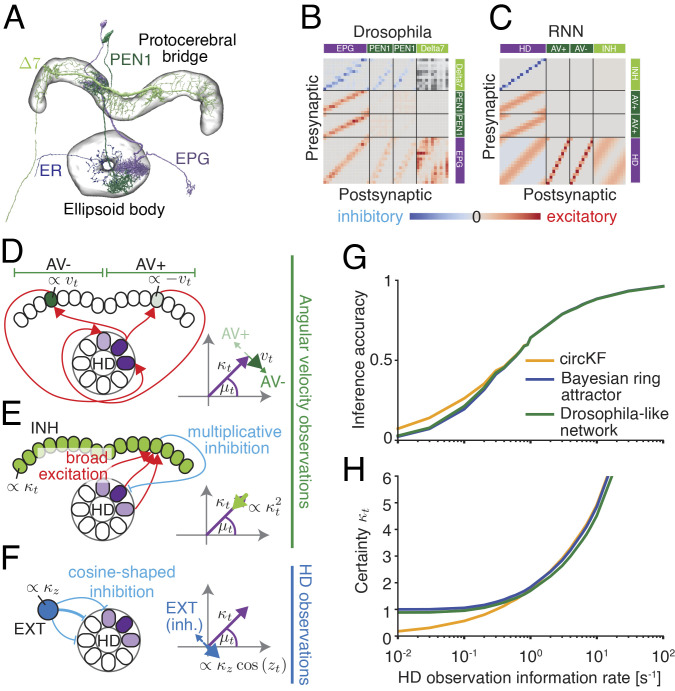Fig. 4.
A Drosophila-like network implementing the circular Kalman filter. (A) Cell types in the Drosophila brain that could contribute to implementing the circular Kalman filter. (B) Connectivity between EPG, Δ7, and PEN1 neurons, as recovered from the hemibrain:v1.2.1 database (43). Neurons were sorted by their spatial position as a proxy for their preferred HD. The total number of synaptic connections between each cell pair was taken to indicate the functional connection strength between these cells. The polarity of Δ7 → Δ7 connections is unknown, and therefore, these connections are omitted. (C) The connectivity profile of a recurrent neural network (RNN) (Fig. 2D–F) that implements an approximate circKF is strikingly similar to the connectivity of neurons in the Drosophila HD system. To avoid confusion with actual neurons, we refer to the neuronal populations in this idealized RNN as head direction (HD), angular velocity (AV+ and AV-, in reference to the two hemispheres), inhibitory (INH), and external input (EXT) populations. (D) Differential activation of AV populations (left/right: high/low) across hemispheres as well as shifted feedback connectivity from AV to HD populations effectively implements the asymmetric (or shifted) connectivity needed to turn the bump position (here, clockwise shift for anticlockwise turn). (E) Broad excitation of the INH population by the HD population, together with a one-to-one multiplicative interaction between INH and HD population, implements the quadratic decay of the bump amplitude needed for the reduction in certainty arising from probabilistic path integration. (F) External input is mediated by inhibiting HD neurons with the preferred direction opposite to the location of the HD observation, effectively implementing a vector sum of belief with HD observation. (G and H) The inference accuracy of the Drosophila-like network is indistinguishable from that of the Bayesian ring attractor. Inference accuracy, certainty, and HD observation information rate are measured as for Fig. 2I.

